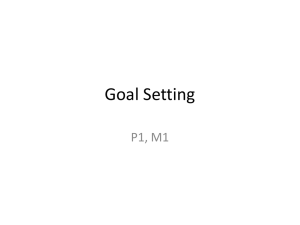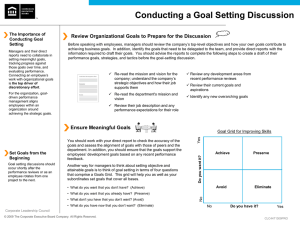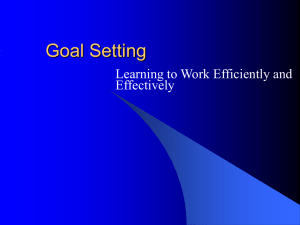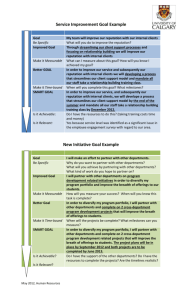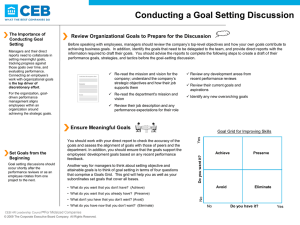summary of the compo..
advertisement
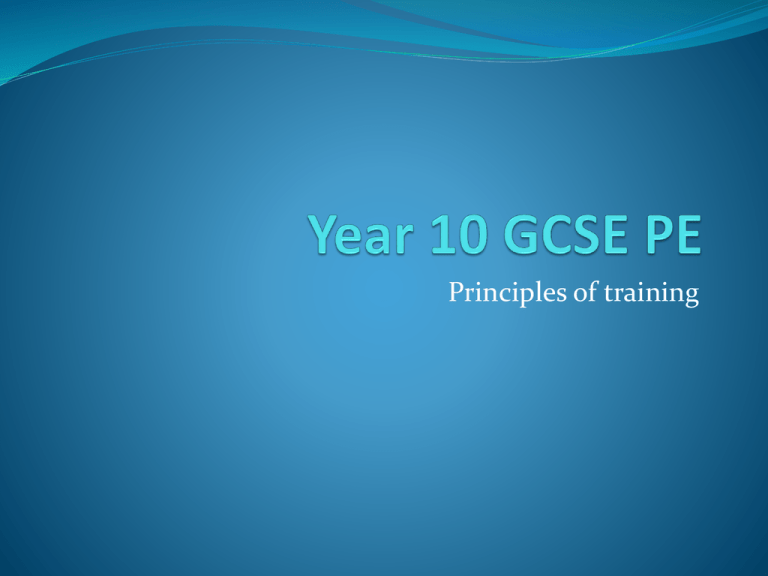
Principles of training Learning Objectives Understand how components link with different sporting positions and the tests used. Summarise the information covered in previous lessons. Basic understanding of ‘the principles of training’. Guess what card Guess the test your partner has on their card Once you guess it correctly you then move onto another person. Testing Components of Fitness Cooper 12 Minute Run Two Ball Bounce Sit and Reach Test Ruler Drop Test 30 Metre Sprint Testing Components of Fitness Hand Grip Test Illinois Agility Test Step Up Test Standing Stork Test Sergeant Jump Test TASK 1 MIND MAP Use the A3 sheet provided. The aim is to develop revision resources for yourself and the rest of the class. You MUST work in two or threes and the person with the neatest hand writing does all the writing.. THE INFORMATION MUST HAVE CLEAR DEFINITIONS LINKING THE COMPONENT TO A SPORT AND POSSIBLE TESTS USED. TARGET SETTING Before planning a Personal Exercise Programme (PEP) you need to decide what your end goal will be and think about the following: What is the aim of your PEP? If is a programme to improve general fitness levels? Specific components? Is it designed to improve performance in a particular activity? EXAMPLE ‘ I want to be fitter’ or ‘I want to be better at football’ or ‘I want to complete the London Marathon’. SMART goals S M A R T SMART goals S - Specific M - Measurable A – Achievable R - Realistic T – Time-bound Specific MEANS: You know exactly what the goal is, i.e. ‘I want to be fitter’. HOWEVER, this is not very specific. Have smaller more specific goals, i.e. ‘I want to run 100 metres further in my cooper run test’. Use your fitness test results to identify your weakest areas based of your sport / activity. Measurable MEANS: You know when a goal has been achieved The goal of running an extra 100 metres in the cooper run test is clearly measurable. HOW? Test yourself at the start middle and the end of the six week exercise programme. Achievable MEANS: 100 metres in the cooper run is achievable over six weeks HOWEVER, running a 26 mile marathon after four weeks of running distance of six miles probably is not. SETTING UNACHIEVABLE GOALS IS LIKELY TO RESULT IN FELLINGS OF DEMOTIVATION Realistic MEANS: In theory the goal can be achieved, but do you have the time and resources to complete it? Example, ‘I want to get stronger biceps by being able to curl an additional 2 kg after a two week training programme’ This could be achievable goal, but if the gym is not open or your membership does not allow you to go at a suitable time, it might NOT be very realistic. Time-bound MEANS: Does the goal have an end point? If not, it is easy to put off achieving it INDEFINITELY!! PEP’s run for six weeks so are timebound, as the goals set have to be achieved within six weeks. Homework Complete the ‘TARGET SETTING’ worksheet. Hand in next lesson (MONDAY 15th October). If you are struggling to complete this worksheet please come to see me before this Friday. Exam Q’s Coordination is: A How well a task is completed B The ability to use two or more body parts together C The ability to change position quickly and with control D Working together as a team Exam Q’s Exam Q’s


